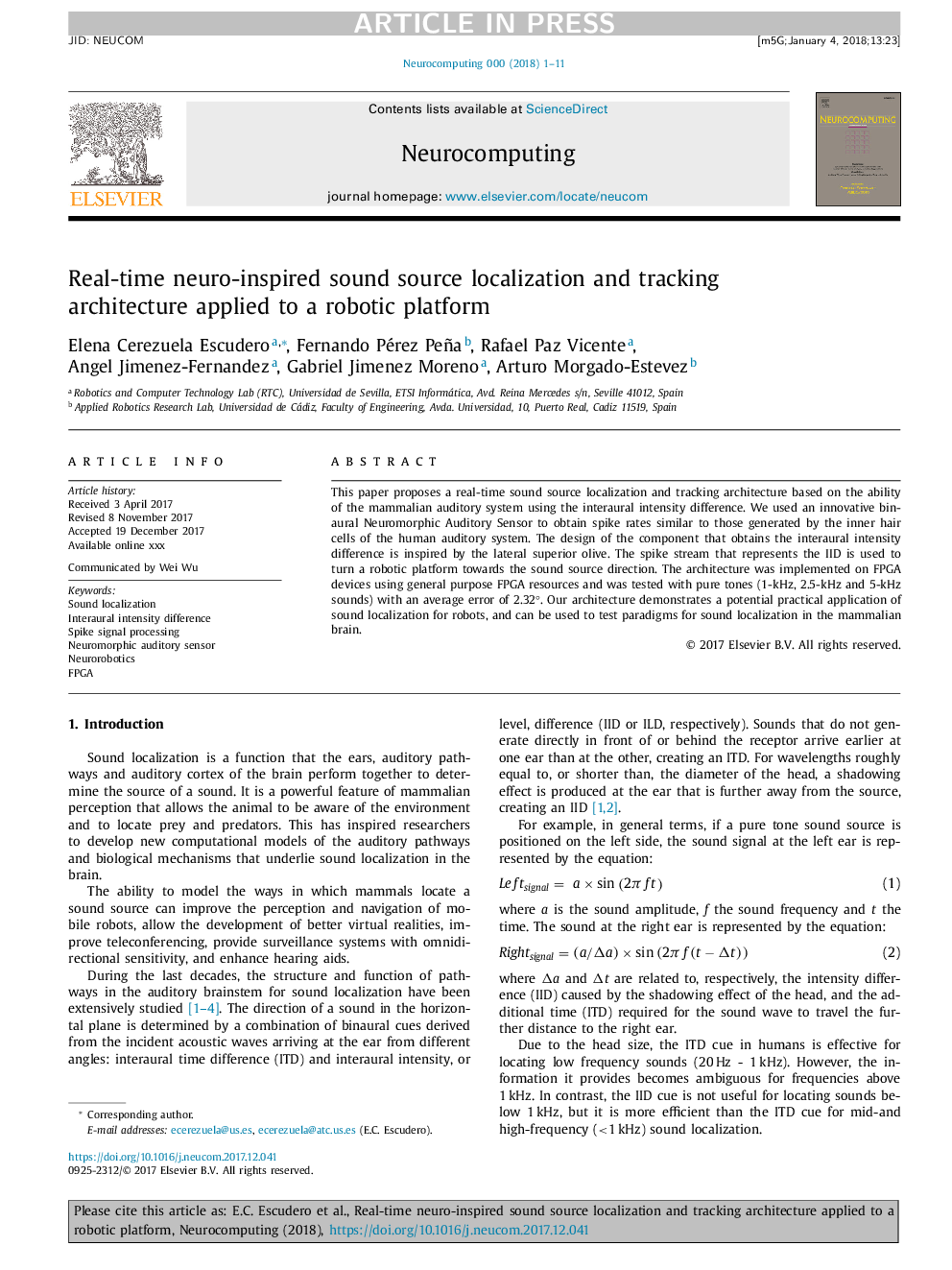| Article ID | Journal | Published Year | Pages | File Type |
|---|---|---|---|---|
| 6864543 | Neurocomputing | 2018 | 11 Pages |
Abstract
This paper proposes a real-time sound source localization and tracking architecture based on the ability of the mammalian auditory system using the interaural intensity difference. We used an innovative binaural Neuromorphic Auditory Sensor to obtain spike rates similar to those generated by the inner hair cells of the human auditory system. The design of the component that obtains the interaural intensity difference is inspired by the lateral superior olive. The spike stream that represents the IID is used to turn a robotic platform towards the sound source direction. The architecture was implemented on FPGA devices using general purpose FPGA resources and was tested with pure tones (1-kHz, 2.5-kHz and 5-kHz sounds) with an average error of 2.32°. Our architecture demonstrates a potential practical application of sound localization for robots, and can be used to test paradigms for sound localization in the mammalian brain.
Related Topics
Physical Sciences and Engineering
Computer Science
Artificial Intelligence
Authors
Elena Cerezuela Escudero, Fernando Pérez Peña, Rafael Paz Vicente, Angel Jimenez-Fernandez, Gabriel Jimenez Moreno, Arturo Morgado-Estevez,
